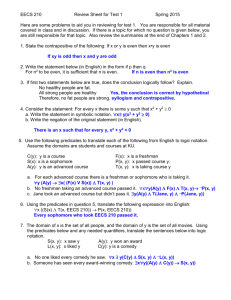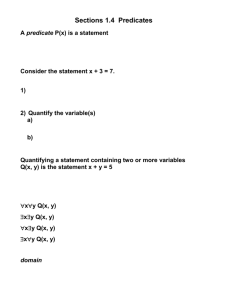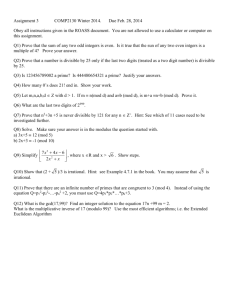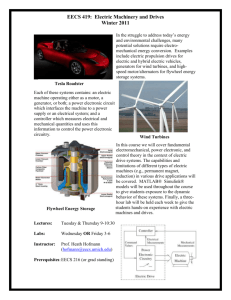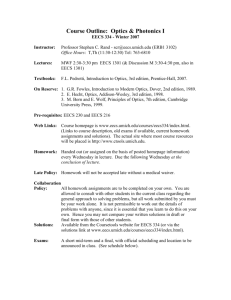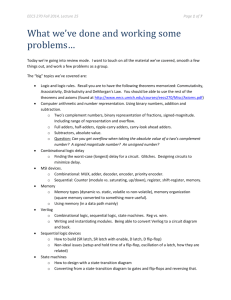Review sheet for test 1
advertisement
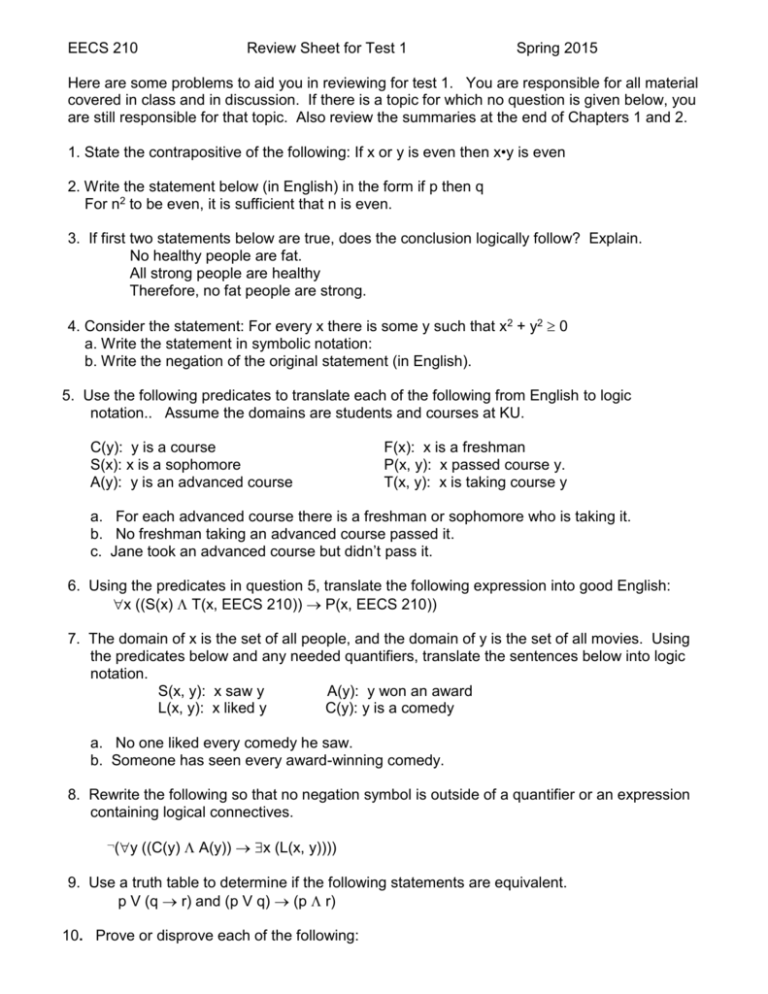
EECS 210 Review Sheet for Test 1 Spring 2015 Here are some problems to aid you in reviewing for test 1. You are responsible for all material covered in class and in discussion. If there is a topic for which no question is given below, you are still responsible for that topic. Also review the summaries at the end of Chapters 1 and 2. 1. State the contrapositive of the following: If x or y is even then x•y is even 2. Write the statement below (in English) in the form if p then q For n2 to be even, it is sufficient that n is even. 3. If first two statements below are true, does the conclusion logically follow? Explain. No healthy people are fat. All strong people are healthy Therefore, no fat people are strong. 4. Consider the statement: For every x there is some y such that x2 + y2 0 a. Write the statement in symbolic notation: b. Write the negation of the original statement (in English). 5. Use the following predicates to translate each of the following from English to logic notation.. Assume the domains are students and courses at KU. C(y): y is a course S(x): x is a sophomore A(y): y is an advanced course F(x): x is a freshman P(x, y): x passed course y. T(x, y): x is taking course y a. For each advanced course there is a freshman or sophomore who is taking it. b. No freshman taking an advanced course passed it. c. Jane took an advanced course but didn’t pass it. 6. Using the predicates in question 5, translate the following expression into good English: x ((S(x) T(x, EECS 210)) P(x, EECS 210)) 7. The domain of x is the set of all people, and the domain of y is the set of all movies. Using the predicates below and any needed quantifiers, translate the sentences below into logic notation. S(x, y): x saw y A(y): y won an award L(x, y): x liked y C(y): y is a comedy a. No one liked every comedy he saw. b. Someone has seen every award-winning comedy. 8. Rewrite the following so that no negation symbol is outside of a quantifier or an expression containing logical connectives. (y ((C(y) A(y)) x (L(x, y)))) 9. Use a truth table to determine if the following statements are equivalent. p V (q r) and (p V q) (p r) 10. Prove or disprove each of the following: a. If (a mod c) = (b mod c) then a = b b. If (a mod b) = c then (a + 1) mod b = c + 1 30 11. Evaluate the following sum: (3/2)i. The appropriate formula must be used. i= 15 n 12. Evaluate the following sum and prove your answer is correct by using induction: (2i + 5). i=1 25 13. Using the fact that 1•4 + 2•5 +... + (n)(n + 3) = [n(n+1)(n+5)]/3 find i•(i+3). i=11 (Do not use other formulas to evaluate this.) 14. Consider the statement: if 3 divides n and 5 divides n then 15 divides n. a. Prove the original statement using a direct proof. b. Prove the inverse of the original statement. (Note: this is not the same as the negation.) 15. Determine if the following statements are consistent. Clearly define the propositions you use and explain how you reached your conclusion. If Judy does not take EECS 210 then she will not graduate. If Judy does not graduate then she isn’t qualified for the job. If Judy reads the textbook then she is qualified for the job. Judy doesn’t take EECS 210, but she reads the book. 16. Use mathematical induction to prove the following: 1 + 5 + 9 + ... + (4n - 3) = n(2n - 1) 17. Prove that n! + 2 is even for all n ≥ 2.
